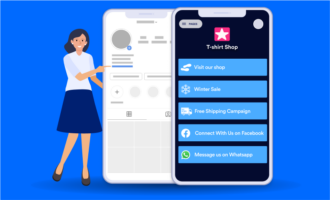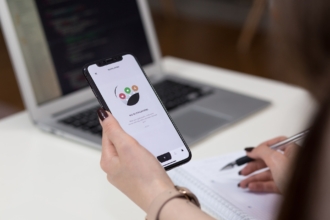Building a restaurant app without coding
- Understand the need for a restaurant app
- Identify your market
- Figure out the features you need
- Determine the right software to build your restaurant app
- Share the restaurant app through multiple channels
Mobile apps in the food and drink industry benefit both a restaurant and its diners. Apps help create customer loyalty by making it easier for customers to learn about menu options and order food.
They enhance the customer experience in other ways, too. With a mobile app, for example, diners can see their order history as well as any special offers that are available.
From a restaurant’s perspective, mobile apps provide an additional sales channel, in addition to greater functionality for internal processes such as scheduling, inventory management, reservation management, and much more. What’s more, you can build a restaurant app for your business without coding.
In this article, we’ll show you how.
How to build a restaurant app without coding
Understand the need for a restaurant app
Before you start creating an app, it’s important to understand what an app can help your restaurant achieve. “On-premises and on a custom website, a restaurant is able to control the customer’s experience,” says Benjamin Fisher, CEO of Foodi Menus, a flexible menu design and management system. “They set the terms, they dictate what a customer sees, they have control over the relationship.”
Restaurants can’t control the entire customer experience, though. “As soon as a customer chooses to use another source to learn more about a restaurant, be it Yelp, Google, social media, or mobile delivery apps like DoorDash or Uber Eats, a restaurant no longer has ownership over that relationship,” Fisher explains. “Suddenly, a third party steps in to dictate what customers see. And those third-parties are even incentivized to direct customers to a potential competitor if they pay more.”
Fisher offers this advice: “By creating an app, and then incentivizing customers to use it, restaurants can more effectively drive traffic to their location, avoid losing 20–30 percent from mobile delivery services, and maintain control over their relationship with customers. An added benefit is more access to customer data, which can lead to more effective marketing and better profit margins.”
Identify your market
Who is the target audience for your restaurant app? Do you want to create something for customers who want to order takeout? For your customers who want to book a reservation online before coming in to enjoy the delicious food? For both?
Or perhaps you want to create a restaurant app for your staff to use for scheduling changes or to check up on food inventory levels?
It’s important to clearly identify who the app is for so you can figure out how to cater to their needs effectively.
“Customizing your app experience to the expectations of your target audience, or better yet, providing them with the tools and capabilities to customize their own experience, is more vital for restaurants now than ever before, thanks to the rise of mobile delivery apps,” says Fisher.
Figure out the features you need
Once you know who you’re creating the app for, you can determine exactly what you want to create. According to Fisher, restaurant apps typically fall into three categories (though there’s frequent overlap): apps that enable faster ordering and payment, apps that offer rewards for loyalty, and apps that drive engagement.
What features are a must-have for your app? For example, do you need to have multiple payment options, in-app notifications, digital ordering options, delivery zone checks, and a live chat option? Identify the features you need to make your app a success, in addition to features that would be an added bonus.
Check other competitive apps in the marketplace to see what functionality they offer so you can figure out how you can offer an even better user experience.
Determine the right software to build your restaurant app
A few years ago, building a restaurant app without knowing how to code would have been challenging. Today, it’s easy if you have the right software.
Jotform offers several mobile app templates that restaurants can use to get started. There are app templates to help with catering, online ordering, digital menus, reservations, recipe books, waitlists, food waste reduction, and so much more. The Jotform App Builder is intuitive and easy to use, and every element is fully customizable. And, you don’t need any coding or app-building experience to use Jotform’s restaurant app templates.
Share the restaurant app through multiple channels
Once you’ve built your restaurant app, it’s time to let your target audience know it’s available. To increase adoption of your app, share it through multiple channels, which may include paper flyers, email marketing, social media marketing, and website marketing. You can also have your restaurant employees mention the app when interacting with customers in person or over the phone, letting them know how to download and access it.
Fisher offers some final words of advice for restaurant owners: “While having a custom app can help control the relationship with customers, it doesn’t mean a restaurant should just shut down their other methods for reaching customers, like DoorDash and Uber Eats. Customers already know and trust these platforms and will likely find your business through mobile delivery apps much easier than through your own app.
“A good way of getting the most out of mobile delivery and a custom app is to incentivize people already ordering on mobile delivery to download your custom app with a deal,” he says. “Adding a QR code that directs to your app as part of every delivery, along with a deal — like 50 percent off their next meal if they order through your app — is sure to drive repeat use of your custom app and lead to better margins long term.”


















































































Send Comment: